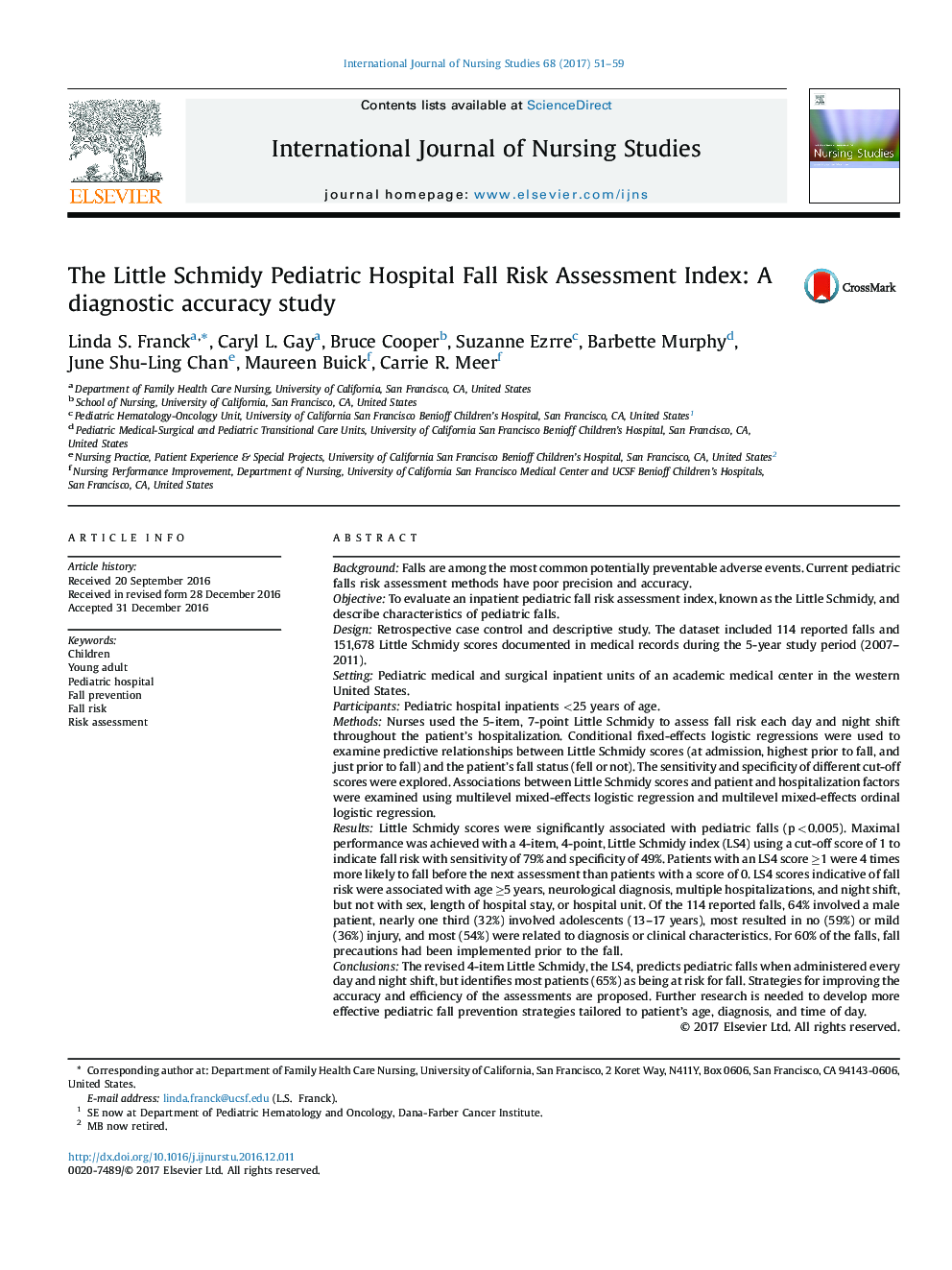| کد مقاله | کد نشریه | سال انتشار | مقاله انگلیسی | نسخه تمام متن |
|---|---|---|---|---|
| 5121027 | 1486501 | 2017 | 9 صفحه PDF | دانلود رایگان |
BackgroundFalls are among the most common potentially preventable adverse events. Current pediatric falls risk assessment methods have poor precision and accuracy.ObjectiveTo evaluate an inpatient pediatric fall risk assessment index, known as the Little Schmidy, and describe characteristics of pediatric falls.DesignRetrospective case control and descriptive study. The dataset included 114 reported falls and 151,678 Little Schmidy scores documented in medical records during the 5-year study period (2007-2011).SettingPediatric medical and surgical inpatient units of an academic medical center in the western United States.ParticipantsPediatric hospital inpatients <25 years of age.MethodsNurses used the 5-item, 7-point Little Schmidy to assess fall risk each day and night shift throughout the patient's hospitalization. Conditional fixed-effects logistic regressions were used to examine predictive relationships between Little Schmidy scores (at admission, highest prior to fall, and just prior to fall) and the patient's fall status (fell or not). The sensitivity and specificity of different cut-off scores were explored. Associations between Little Schmidy scores and patient and hospitalization factors were examined using multilevel mixed-effects logistic regression and multilevel mixed-effects ordinal logistic regression.ResultsLittle Schmidy scores were significantly associated with pediatric falls (p < 0.005). Maximal performance was achieved with a 4-item, 4-point, Little Schmidy index (LS4) using a cut-off score of 1 to indicate fall risk with sensitivity of 79% and specificity of 49%. Patients with an LS4 score â¥1 were 4 times more likely to fall before the next assessment than patients with a score of 0. LS4 scores indicative of fall risk were associated with age â¥5 years, neurological diagnosis, multiple hospitalizations, and night shift, but not with sex, length of hospital stay, or hospital unit. Of the 114 reported falls, 64% involved a male patient, nearly one third (32%) involved adolescents (13-17 years), most resulted in no (59%) or mild (36%) injury, and most (54%) were related to diagnosis or clinical characteristics. For 60% of the falls, fall precautions had been implemented prior to the fall.ConclusionsThe revised 4-item Little Schmidy, the LS4, predicts pediatric falls when administered every day and night shift, but identifies most patients (65%) as being at risk for fall. Strategies for improving the accuracy and efficiency of the assessments are proposed. Further research is needed to develop more effective pediatric fall prevention strategies tailored to patient's age, diagnosis, and time of day.
Journal: International Journal of Nursing Studies - Volume 68, March 2017, Pages 51-59
